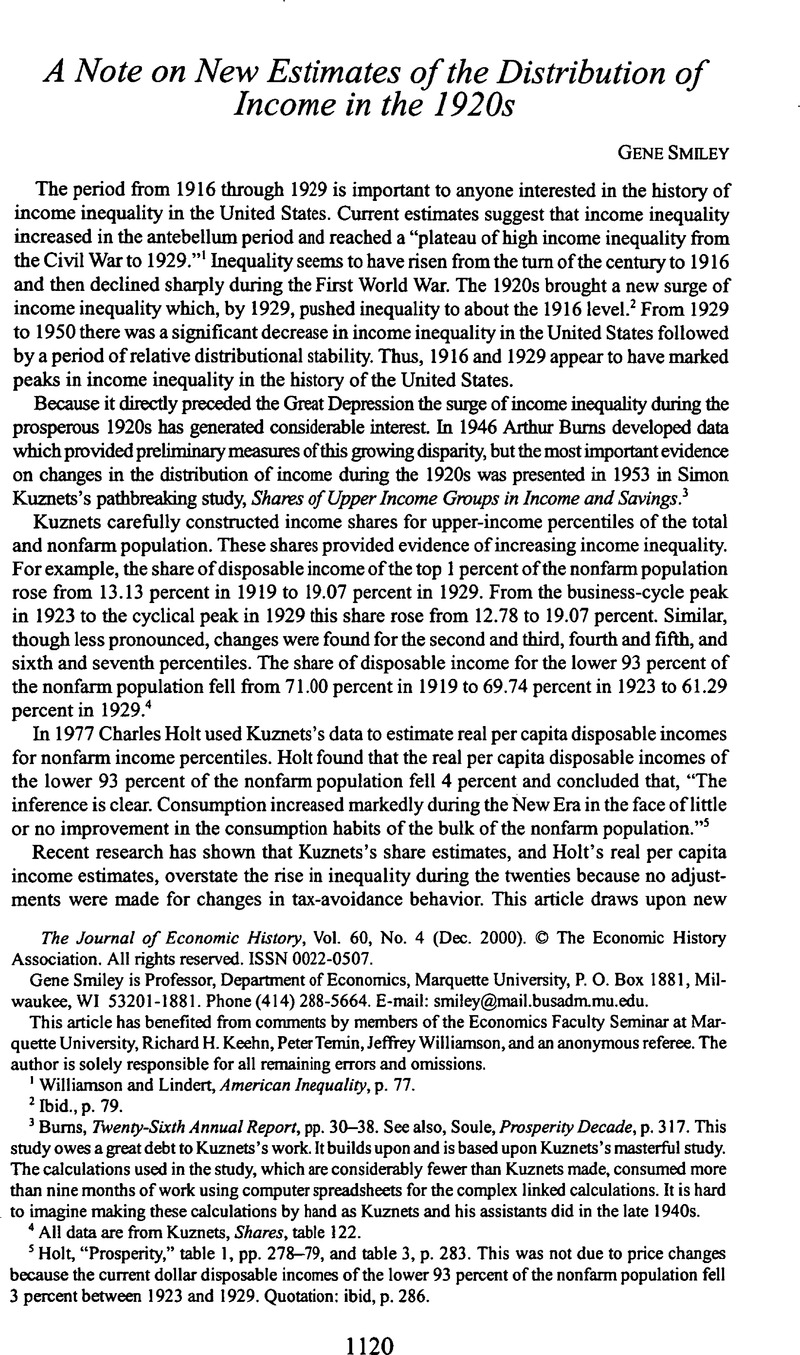Crossref Citations
This article has been cited by the following publications. This list is generated based on data provided by Crossref.
Ivanova, Maria N.
2017.
Profit growth in boom and bust: the Great Recession and the Great Depression in comparative perspective.
Industrial and Corporate Change,
Vol. 26,
Issue. 1,
p.
1.
Geloso, Vincent
2018.
Austrian Economics: The Next Generation.
Vol. 23,
Issue. ,
p.
161.
Magness, Phillip W.
2019.
Inequality, prosperity, and fiscal policy: A case for caution in interpreting income distributions.
The International Trade Journal,
Vol. 33,
Issue. 1,
p.
16.
Geloso, Vincent
and
Magness, Phillip
2020.
THE GREAT OVERESTIMATION: TAX DATA AND INEQUALITY MEASUREMENTS IN THE UNITED STATES, 1913–1943.
Economic Inquiry,
Vol. 58,
Issue. 2,
p.
834.
Holcombe, Randall G.
and
Gmeiner, Robert J.
2021.
Essays on Government Growth.
Vol. 40,
Issue. ,
p.
75.
Stuart, Paul H.
2022.
A Century of Family Budget Counseling.
Families in Society: The Journal of Contemporary Social Services,
Vol. 103,
Issue. 1,
p.
101.
Geloso, Vincent J
Magness, Phillip
Moore, John
and
Schlosser, Philip
2022.
How Pronounced is the U-Curve? Revisiting Income Inequality in the United States, 1917–60.
The Economic Journal,
Vol. 132,
Issue. 647,
p.
2366.
Fitzsimmons, Patrick
Geloso, Vincent
and
Hall, Jacob
2023.
Did The Great Levelling Begin After 1921?.
SSRN Electronic Journal,
Fitzsimmons, Patrick
Geloso, Vincent
and
Hall, Jacob
2025.
Did the Great Leveling begin after 1921?.
Scandinavian Economic History Review,
p.
1.



